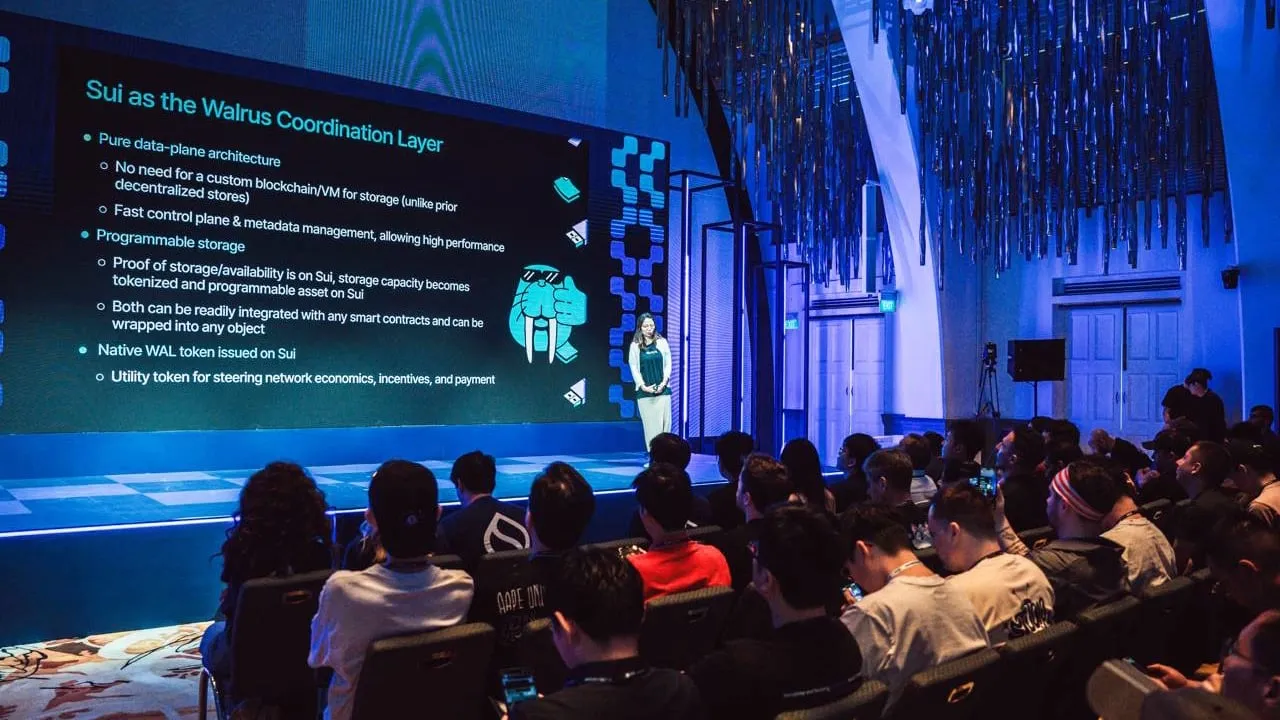Mysten Labs finalized its Walrus decentralized storage and data availability protocol at its Sui Builder House event in Singapore.
“Mysten recognizes the importance of data and the lack of storage innovation in recent years and has chosen decentralized storage as the next key area to address to make Web3 a reality,” said Janet Wu, director of product at Mysten Labs. Declutter.
Fresh in from #BuilderHouse Singapore…Walrus officially becomes an independent delegated Proof-of-Stake network, governed and powered by its own utility token, WAL. pic.twitter.com/bZz6sw7vRh
— Walrus (@WalrusProtocol) September 17, 2024
The release of the Walrus whitepaper and the announcement of the upcoming WAL token will see the project move into the next phase of its development, following the launch of devnet in June 2024.
The decentralized storage platform “unlocks Web3 for applications such as social networking with rich content requirements, collaboration platforms such as GDocs and AI training with data provenance guarantees,” Mysten Labs researcher Lefteris Kokoris-Kogias said in a tweet.
Decentralized storage allows data “to be stored on multiple nodes, providing robust resistance to censorship and improved reliability,” Kokoris-Kogias explains.
Walrus is a next-generation decentralized storage platform, says Sui Product Marketing Manager Casson Rosenblatt Declutter. Walrus is built on top of layer 1 network Sui and stores data as files called ‘blobs’.
At its heart is a new data encryption algorithm, Red Stuff, which uses a new algorithm based on fountain codes, whose simplicity “enables the encrypting of large files in one go, resulting in significantly faster processing,” according to the Walrus white paper.
WAL tokenomics
During a presentation, Janet Wu, Product Director at Mysten Labs, explained the tokenomics behind Walrus’ proof of stake token WAL.
WAL’s staking model allows nodes to receive data in proportion to their relative importance, Wu explains, where storage prices are determined collectively by storage nodes and user payments are returned to stakers in the form of staking rewards. Attestation ensures that storage nodes take on ‘asynchronous data challenges’ to ensure they retain data, reducing their deployment if they cannot meet the challenges.

Janet Wu, product director at Mysten Labs. Image: Mysten Labs
WAL also functions as a governance token, with stakers using it to vote on parameter adjustments. The tokenomics are designed to allow Walrus’ storage nodes to “regroup and function,” and to encourage participants to “operate as a decentralized system,” Wu explains.
With the Walrus testnet launching later this year, the platform is already seeing interest from projects looking to leverage its decentralized storage offering. Breaking the Ice, a Walrus Devnet Hackathon, has already seen 60 submitted projects and 288 registered participants, with a $50,000 prize pool for the winning teams.
Declutter itself has joined Walrus and will store its news articles, videos and photos on the protocol.
“Any builder from any chain can build on Walrus,” said Wu. “While Walrus uses Sui as the underlying coordination layer, Walrus is chain agnostic and all apps from any chain can work with Walrus,” she explained, adding that the protocol is designed for “anyone who wants to decentralize their stack, their storage. You can build Web2 apps that use Walrus to take advantage of its resilience and transparency.”

